Introduction of the basic guide to drawing #1.
Hello my beautiful people of Steemit!
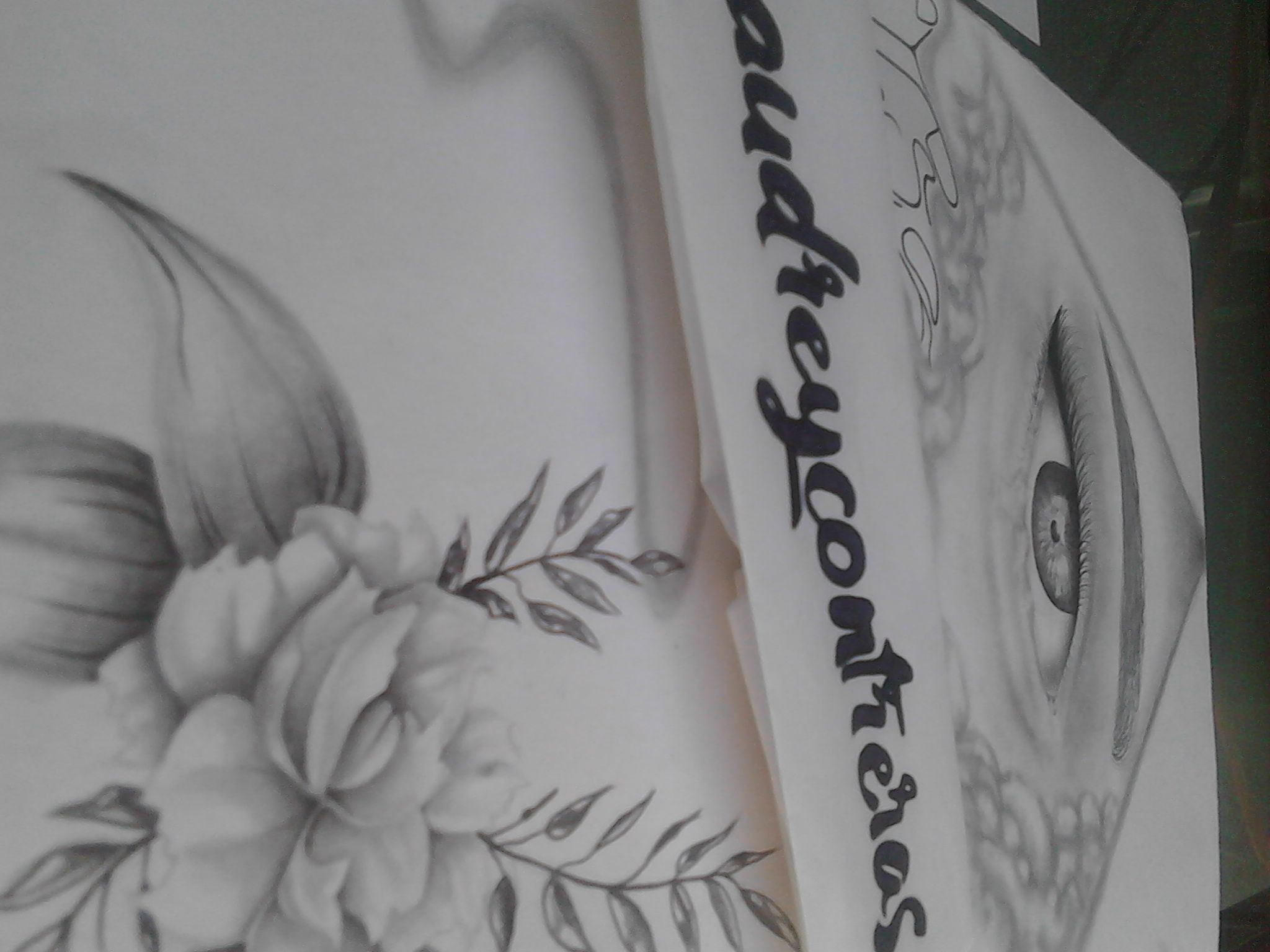
Today, I come to give you an introduction of the basic guide to drawing #1.
In this post will talk about a subject to which I have dedicated the last 2 years, draw.
In my short biography, I told you that my path in art, began with drawings; I really love drawing. It is free and self-taught, with a margin of error and you can transform it into a work. But two years ago, I decided to start drawing; Due to the fact that I really want to go into is tattooing professionally and the closest thing to tattoo is drawing.
Here you have one of my first painting and to be honest I had no idea how he could start, however, with that painting, I begin to learn the art of painting
Observation.
This is a point we must consider when we want to create an object, it is already painted, drawn and even illustrated.
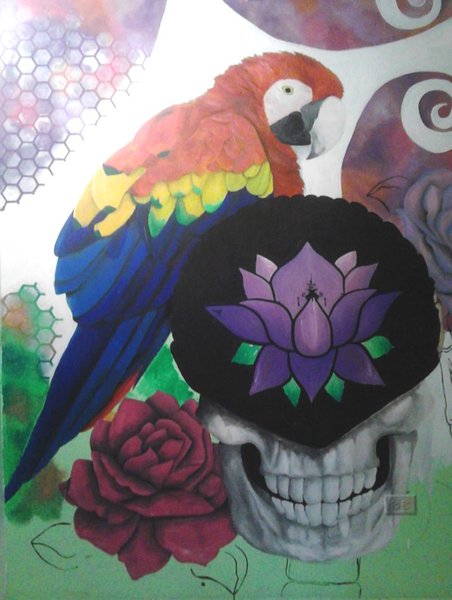
Despite the fact that as composition is poorly made, since I did not do it in an orderly manner, but I began to find myself in this world because I dared to paint things that had not done before.
I am telling you that we must dare to do more complicated drawings and after that we have already reached a basic of a drawing or painting level, since you can fall into judging yourself and you can enter in a State in which you feel that either you've not advancing or are simply not able of do it. The truth is that, everybody can do it. You have to keep going forward. That is what is improved the quality of your projects.

Observation is one thing and seeing is another.
When we begin to notice all the characteristics of an object, its color, its texture, its light/dark. In the process of viewing and analyzing 'something', our brain is separating each detail, which in your eyes is a solid matter. This process of 'split' is invisible to our eyes, but in our brain, we can have the opportunity to delve a little more about this matter that is our view.
There are many ways of exercising our brain and eyes to familiarize ourselves with what we are going to draw, an exercise that I've applied is
Draw with the vision
It is based on taking an object as a reference (example: a bowl, a vase, a sphere) and you can imagine as we copy that object in a piece of paper. You start to see from where comes the light, where go the shadows; rudeness or delicacy of texture, details on the edges, size, proportion, location in space.
But we must not remain limited; When you're enjoying a landscape, sea, trees; all these help us to exercise our brain to imagine the process of drawing of the object.
I'll explain something important to all the people that want to start drawing professionally. You must know that there are facts that often change the quality of our drawing. Your pencils
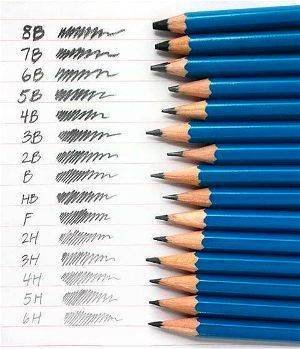
We have pencils from 6 H to the 8B.
_.The letter H comes from the English HARD (hard), which means that the mine of this pencil is hard and this leaves very gentle strokes; We must prevent from not settle us so that you can mark our drawing sheet. These H pencils are ideal for our first strokes, i.e. the draft, as for being a hard mine they can be sharpened with the Sharpener to differences of B which is soft and the tip breaks easily. I recommend 3 H and 2 H to make sketches.
_.The letter B, which in English is BLACK (black) gives us reference that this pencil strokes are much more intense, since these mines are soft. What you need to know about these pencils is that we have to be careful not to contaminate our drawing, since these tend to stain for being so intense. You can use them to make shadows and dark lines, but for having the soft lead break easily when you take out you tip. At first I recommend to start with a B or 2B, everything depends on the intensity of black you want to have in your picture and the confidence that you're taking with the pencil. One thing we must take into account is that there are B to settle them leave a metallic tone in the drawing and not it fits well with the shadows of other pencils, I recommend not to use different shades of B to a single drawing, rather choose one for all the shadows.
. _The HB referred to as HARD/BLACK (hard/black) , who is 0 for this scale of pencils, with this you can do several things, either outline or shadow, this tends to be a little more like a B.
._The F which means firm, goes hand in hand with the HB, only that this pencil tends to be more H unlike the HB.
And the numbers refer to the degree of intensity of each pencil; 6h the clearest, darkest 8B.
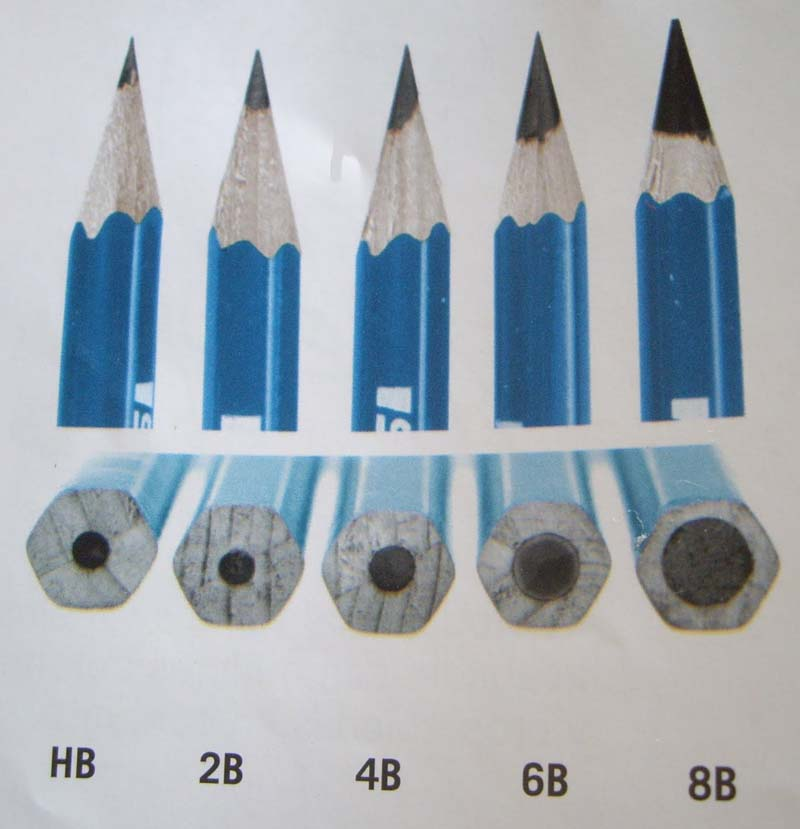
It is important to know that in order to draw is needed to have an organization in your mind. We need to know where to start and the steps to follow, so I recommend to exercise and begin the drawing with a clear vision; some things change for each artist, I am still in the process of learning; one of those things are that you have to be organized if we want to have a neat drawing.
The first thing you need to know is about the draft, because it will become the first draft of our project. The most advisable is to use very smooth lines since we are in the process of creation of a drawing. At this moment, we will be creating a drawing and a first draft. I advise to be delicate with the draft due to the fact that if the paper begins to break at the moment. You will not be satisfied with the result (I say this from experience xD).
The freedom of your lines in the draft also depends on the type of drawing that you will make.
Example:
For realism, very delicate, almost imperceptible; lines are used now that realism is based mostly in faded shadows and very specific definitions. I opt for a 3 H or 4 H pencil.
I will now share some recommendations that, for me, are important to know so that you will always be a little more satisfied with your work. ;)
-I'll show you them here some exercises that you have to do them daily, so you can improve your strokes and your lines will be placed without fear of damaging your drawing. It consists of practice the vertical lines, horizontal and cross-cutting; as circles and spirals.
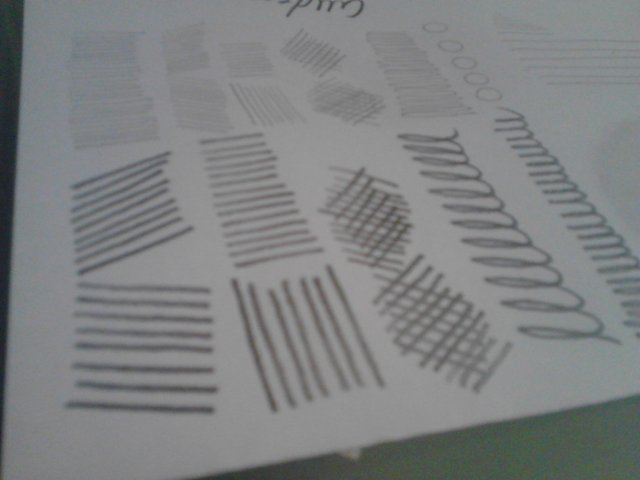
The idea is to make rows of the same size of lines with the same distance between them, with just one stroke. Full sheet at least once a day.
And circles of different sizes to make them in such a way to get used with the hands to the rounded shapes
-The surface on which you are going to work, you have to make sure that it is correct, since this influences when it comes to drawing. As the glass surfaces are ideal for drawing.
-Ensure that we have clean hands and the surface.
-Take into account always the directions of our shadows.
-I recommend to people that doesn't have trust to pencils B, it is recommended to use 2B to avoid unexpected spots in our drawing and 2 H for the draft (Y)
-When you are doing a big picture and you can't find how to support your hand while you are drawing, I recommend to use a piece of paper in your place of support, so you can have better access to the drawing without leave and tries not to slide the sheet by drawing.
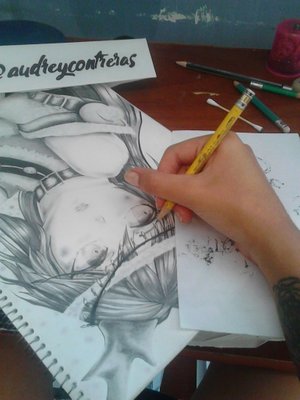
-In the event that you want to delete something in the drawing, I do not recommend to do so if have already applied many layers of shadows (on all B pencils).
-It is advisable to start practicing with simple objects to begin with the most complicated.
-As you are doing your practices. You will be knowing and getting more expertise in this art, so you can experiment in making an own composition.
As personal experience, I have had some problems to deal with my emotional control, due to the fact that my frustrations of not achieving something as I desire. These feelings, overwhelms me; but you don't have to worry, if a job is not as good as you expected, keep going ahead; you just start a new project, you are not losing anything if you keep trying over and over again. All efforts are well compensated, all I can tell you is: “DON'T STOP TRYING”. Everything is possible in this dimension; the only inconvenient is the different in density that makes slower its materialization.
Be persevering.
In the coming Post, I will be delivering more details about this Art and more; topics such as: shadows, lines and strokes, proportion, depth, etc.
Any questions or suggestions do not hesitate to comment!
Amezing, few days back I was looking for something like this, containing basics of sketching. Thnx for awesome tutorial
Thanks you very much for your comment. Im glad to help ;)
una genialidad!
you have my up vote! Best regards to you!
Thanks you!! My best wishes for you too...
This post spoke to me on so many levels! You have my up vote!
Im really really Happy to read that! Thanks!
Bonito introduction to drawing! I'm looking forward to seeing more of your work both drawing and painting. It's nice to find other artists on here! You have my upvote and follow!
Muchas gracias! :)
Gracias por el comentario! Im excited to continue helping people :D
De nada! Me too! :)
Yo soy mas amigo de los marcadores pero sin duda el post me inspira a seguir practicando e intentando con lapices :) -W